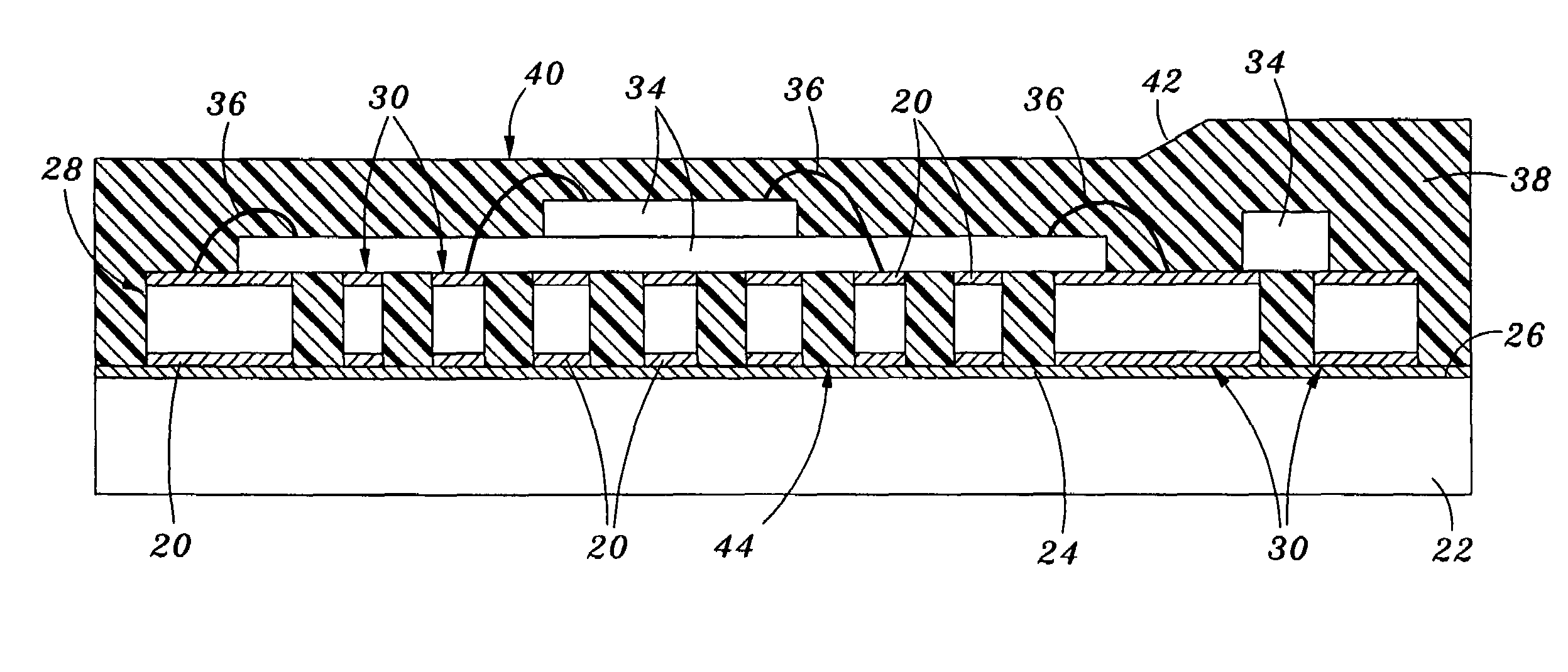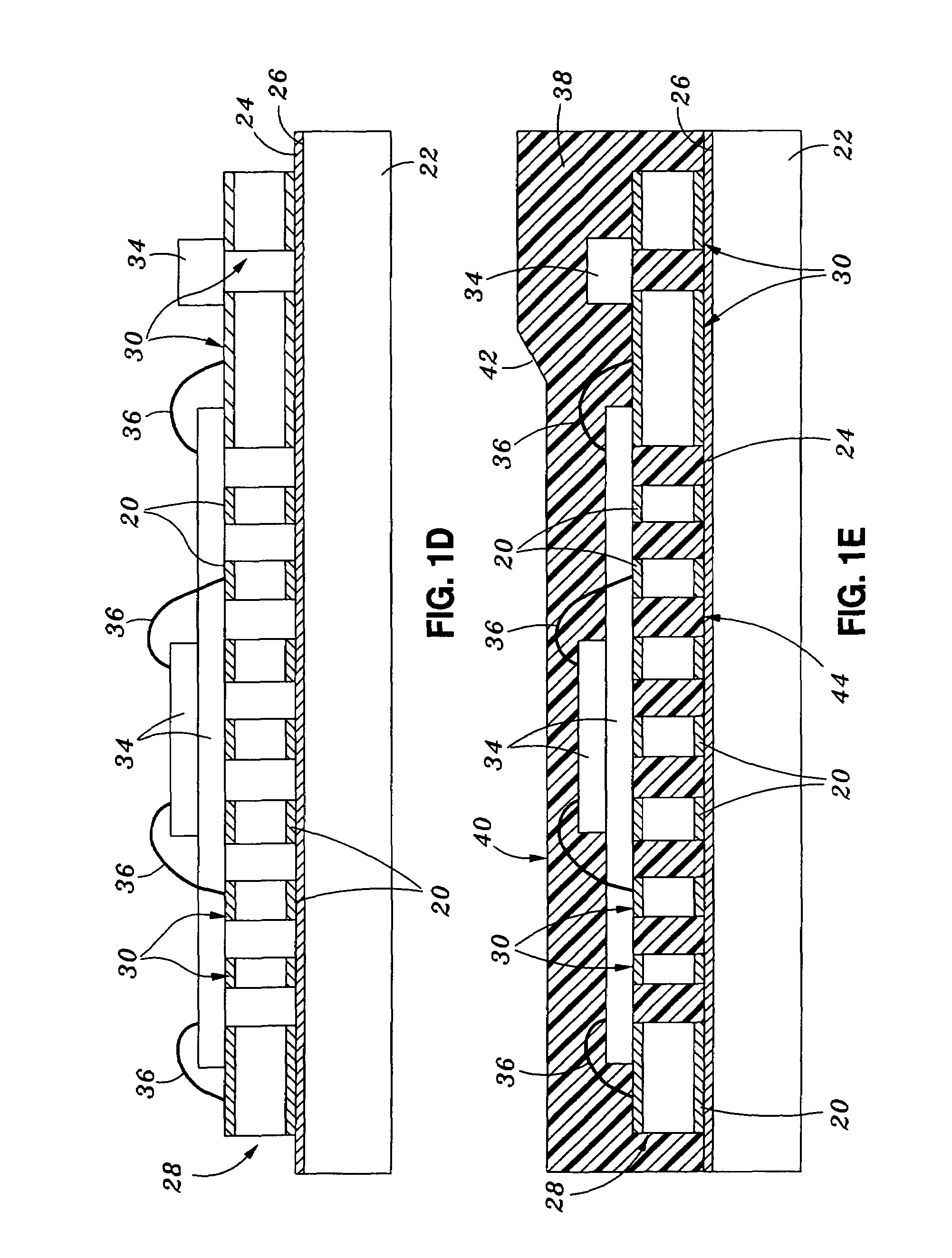Secure digital memory card using land grid array structure
a secure digital memory and land grid array technology, applied in the field of memory cards, can solve the problems of increasing the manufacturing cost of the prior art memory card, increasing the susceptibility of internal components mounted to the substrate to being contaminated with various particles, and decreasing the yield rate, so as to achieve complex signal routing
- Summary
- Abstract
- Description
- Claims
- Application Information
AI Technical Summary
Benefits of technology
Problems solved by technology
Method used
Image
Examples
Embodiment Construction
[0020]Referring now to the drawings wherein the showings are for purposes of illustrating preferred embodiments of the present invention only, and not for purposes of limiting the same, FIGS. 1A-1E illustrate an exemplary sequence of steps which may be used to facilitate the formation of a memory card 10 which is constructed in accordance with the present invention and shown in its completed state in FIGS. 4 and 5. Those of ordinary skill in the art will recognize that the fabrication process which will be described below, though applicable to fabricate one memory card 10 at a time, is typically implemented on a scale wherein multiple memory cards 10 are simultaneously fabricated using a common carrier / substrate. As shown in FIG. 1A, in the initial step of the fabrication process for the memory card 10, a layer or sheet 12 of a conductive metal material (e.g., copper) is provided, the sheet 12 defining a generally planar first (top) surface 14 and an opposed, generally planar second...
PUM
 Login to View More
Login to View More Abstract
Description
Claims
Application Information
 Login to View More
Login to View More - R&D
- Intellectual Property
- Life Sciences
- Materials
- Tech Scout
- Unparalleled Data Quality
- Higher Quality Content
- 60% Fewer Hallucinations
Browse by: Latest US Patents, China's latest patents, Technical Efficacy Thesaurus, Application Domain, Technology Topic, Popular Technical Reports.
© 2025 PatSnap. All rights reserved.Legal|Privacy policy|Modern Slavery Act Transparency Statement|Sitemap|About US| Contact US: help@patsnap.com



